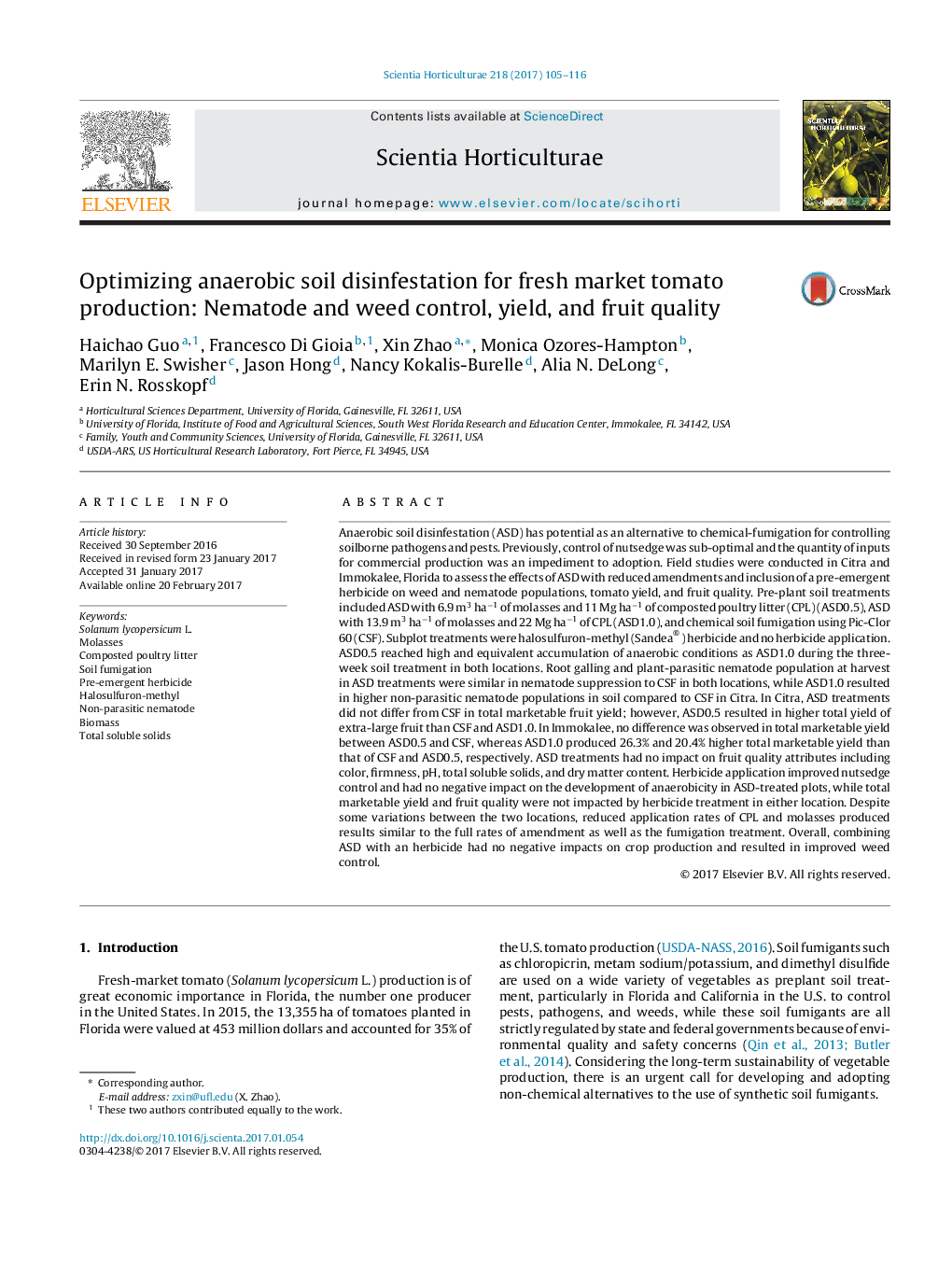| کد مقاله | کد نشریه | سال انتشار | مقاله انگلیسی | نسخه تمام متن |
|---|---|---|---|---|
| 5769533 | 1628780 | 2017 | 12 صفحه PDF | دانلود رایگان |
- ASD was achieved even when composted poultry litter and molasses application rates were half of the original rates.
- ASD provided similar plant parasitic nematode control in comparison with chemical soil fumigation.
- ASD produced similar or higher marketable yield compared to chemical soil fumigation.
- Combining ASD with an herbicide did not impact the development of anaerobicity.
- Herbicide application improved ASD weed control efficacy.
Anaerobic soil disinfestation (ASD) has potential as an alternative to chemical-fumigation for controlling soilborne pathogens and pests. Previously, control of nutsedge was sub-optimal and the quantity of inputs for commercial production was an impediment to adoption. Field studies were conducted in Citra and Immokalee, Florida to assess the effects of ASD with reduced amendments and inclusion of a pre-emergent herbicide on weed and nematode populations, tomato yield, and fruit quality. Pre-plant soil treatments included ASD with 6.9 m3 haâ1 of molasses and 11 Mg haâ1 of composted poultry litter (CPL) (ASD0.5), ASD with 13.9 m3 haâ1 of molasses and 22 Mg haâ1 of CPL (ASD1.0), and chemical soil fumigation using Pic-Clor 60 (CSF). Subplot treatments were halosulfuron-methyl (Sandea®) herbicide and no herbicide application. ASD0.5 reached high and equivalent accumulation of anaerobic conditions as ASD1.0 during the three-week soil treatment in both locations. Root galling and plant-parasitic nematode population at harvest in ASD treatments were similar in nematode suppression to CSF in both locations, while ASD1.0 resulted in higher non-parasitic nematode populations in soil compared to CSF in Citra. In Citra, ASD treatments did not differ from CSF in total marketable fruit yield; however, ASD0.5 resulted in higher total yield of extra-large fruit than CSF and ASD1.0. In Immokalee, no difference was observed in total marketable yield between ASD0.5 and CSF, whereas ASD1.0 produced 26.3% and 20.4% higher total marketable yield than that of CSF and ASD0.5, respectively. ASD treatments had no impact on fruit quality attributes including color, firmness, pH, total soluble solids, and dry matter content. Herbicide application improved nutsedge control and had no negative impact on the development of anaerobicity in ASD-treated plots, while total marketable yield and fruit quality were not impacted by herbicide treatment in either location. Despite some variations between the two locations, reduced application rates of CPL and molasses produced results similar to the full rates of amendment as well as the fumigation treatment. Overall, combining ASD with an herbicide had no negative impacts on crop production and resulted in improved weed control.
Journal: Scientia Horticulturae - Volume 218, 14 April 2017, Pages 105-116
